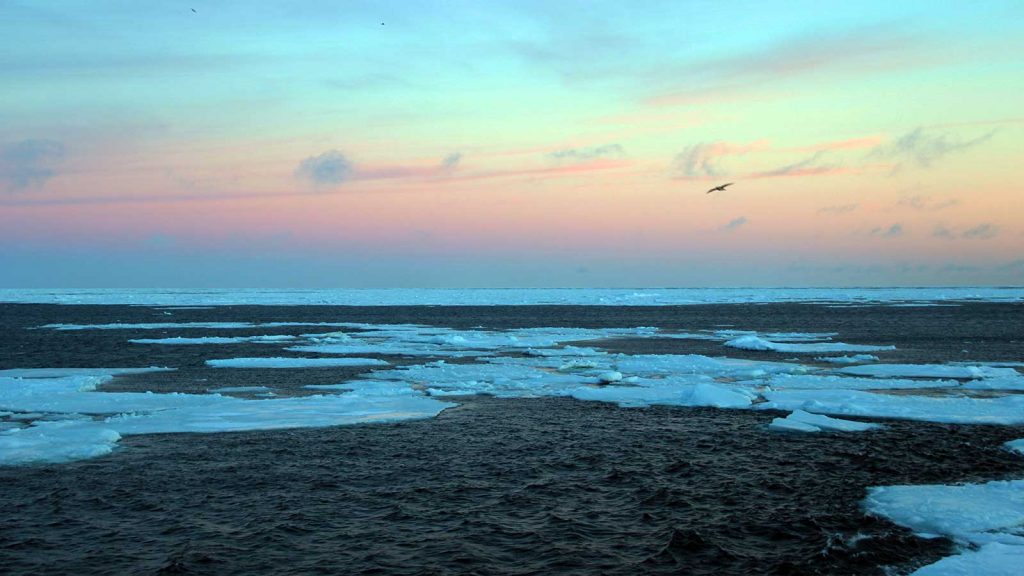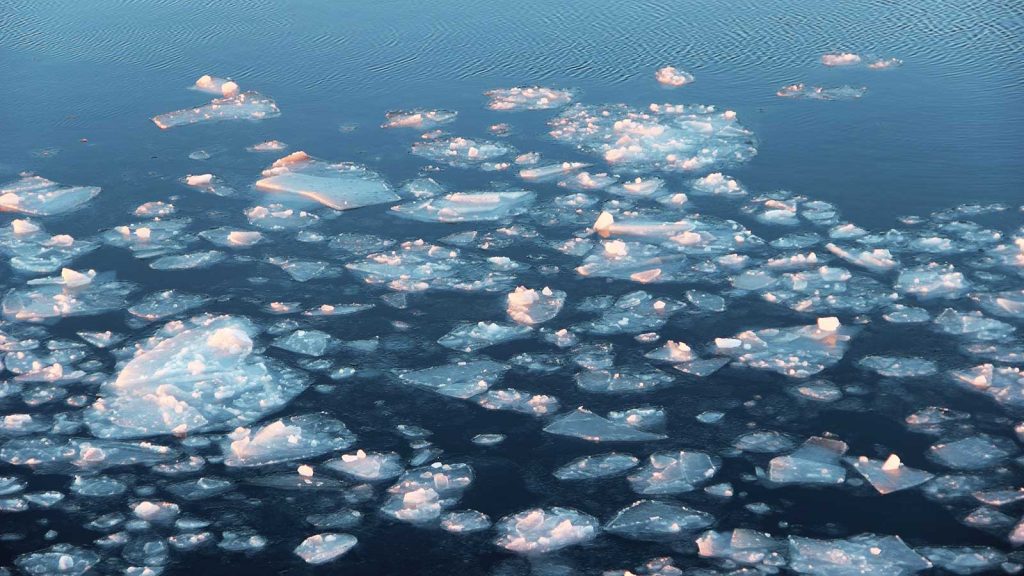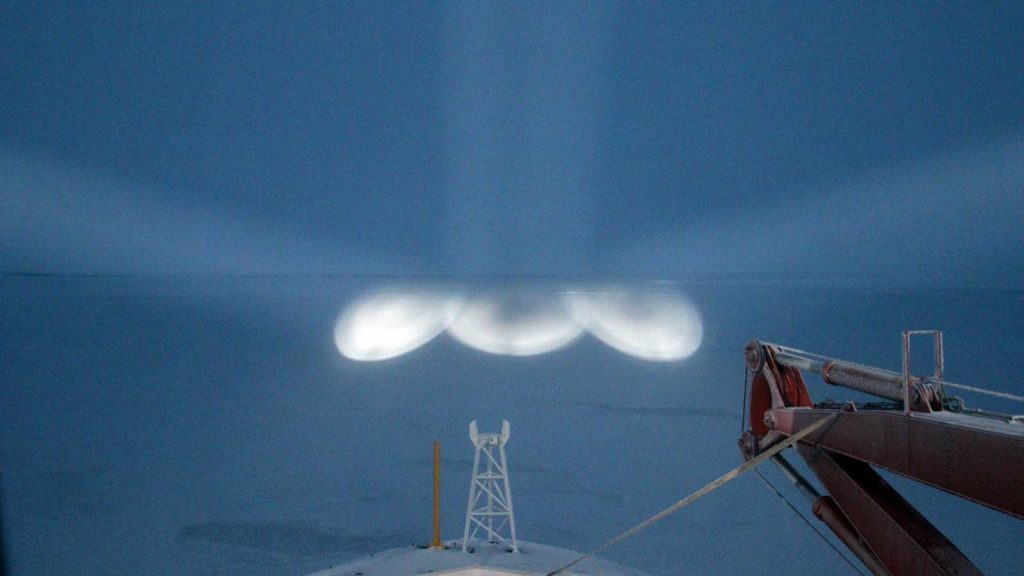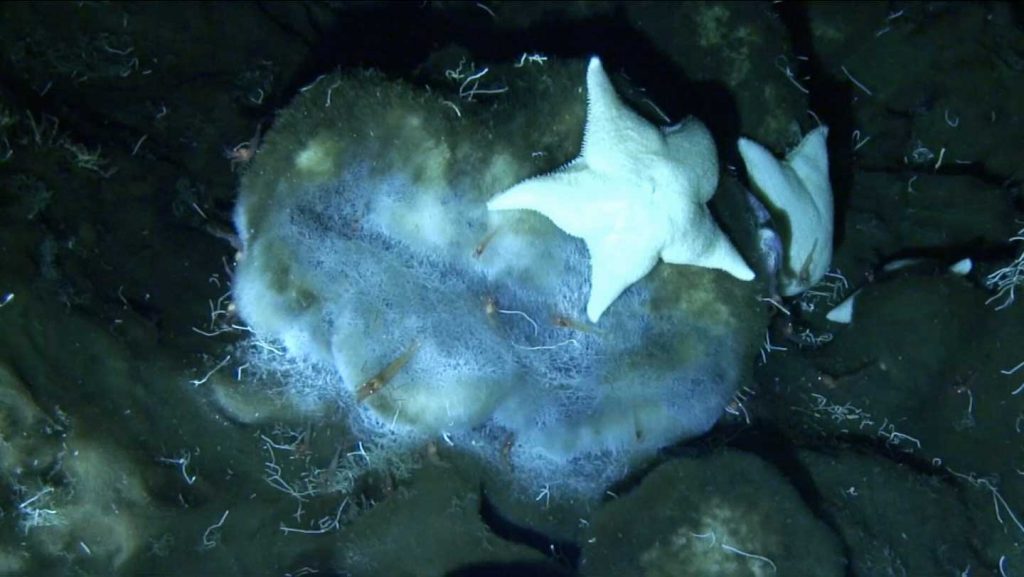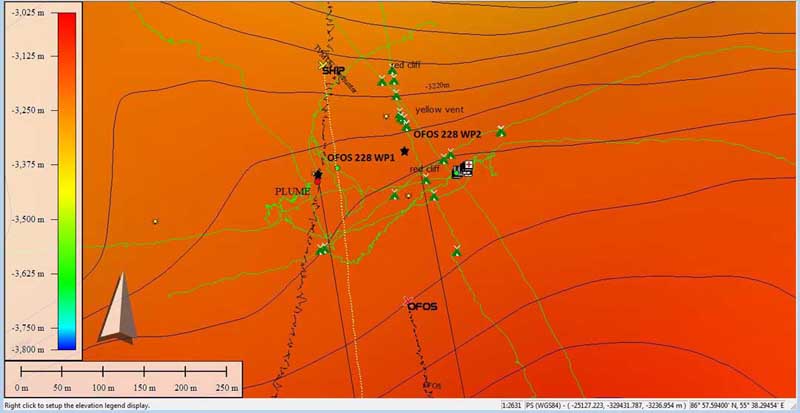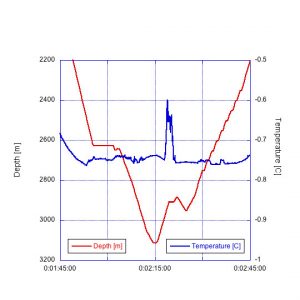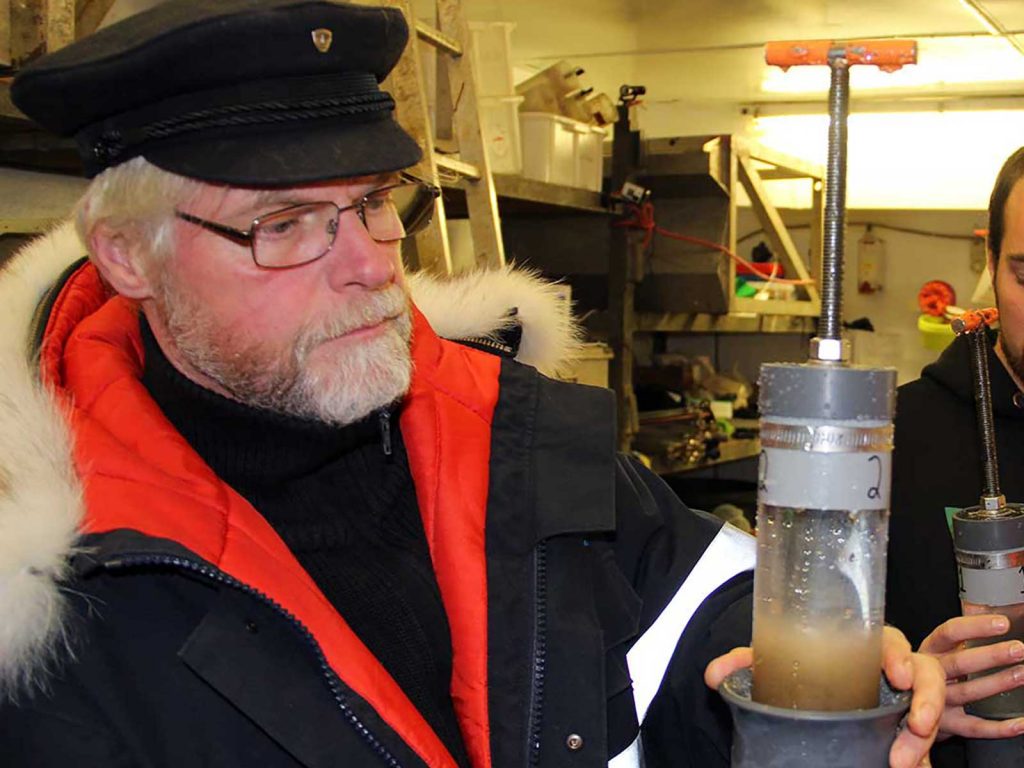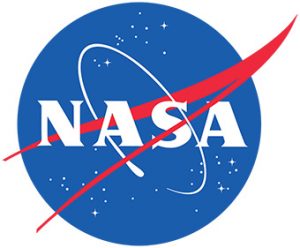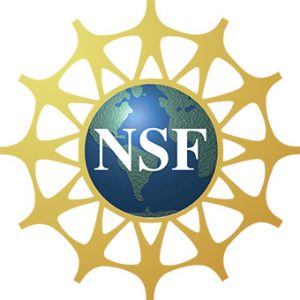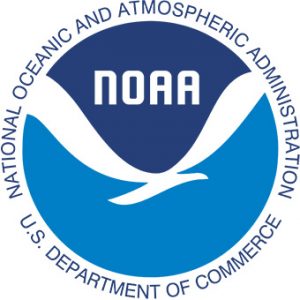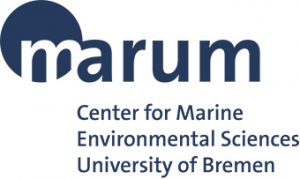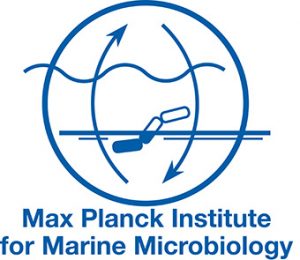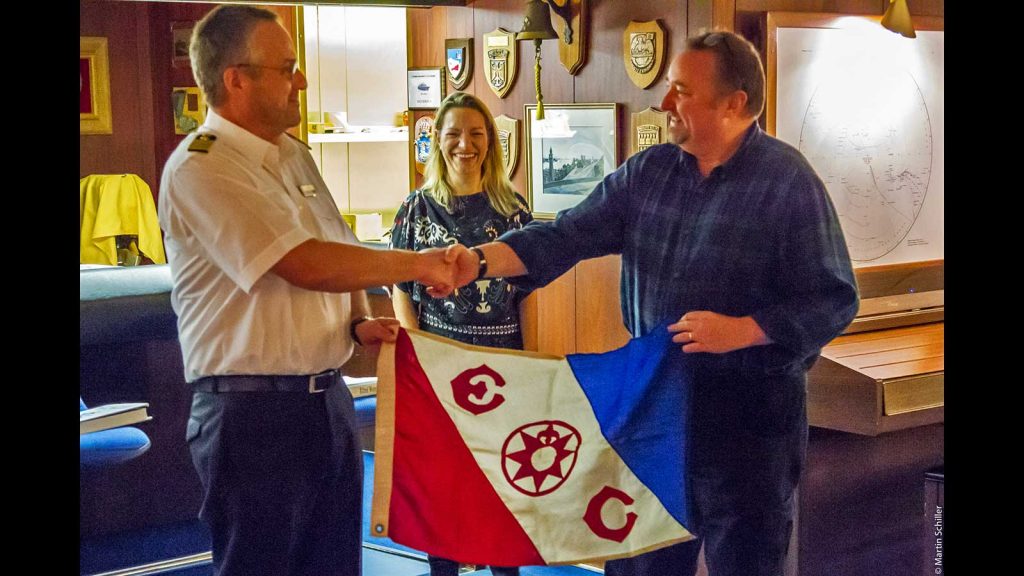
Hands across the sea. Captain Stefan Schwarze, chief scientist Prof. Dr. Antje Boetius, and blog author Chris German celebrating the end of their expedition together with Explorers Club Flag 80. It was not lost on the NUI team that Capt. Schwarze insisted that this should only be “auf wiedersehen,” (literally, “see you again”) not “goodbye.” Should we come back with a deeper-diving NUI and find those vents? (photo by Martin Schiller, AWI)
Friday, October 21 – At the risk of ruining what was already a fine final blog post (if I do say so myself), the further we get from the heat of the action, the more appreciation I have begun to develop for what we DID achieve on this expedition.

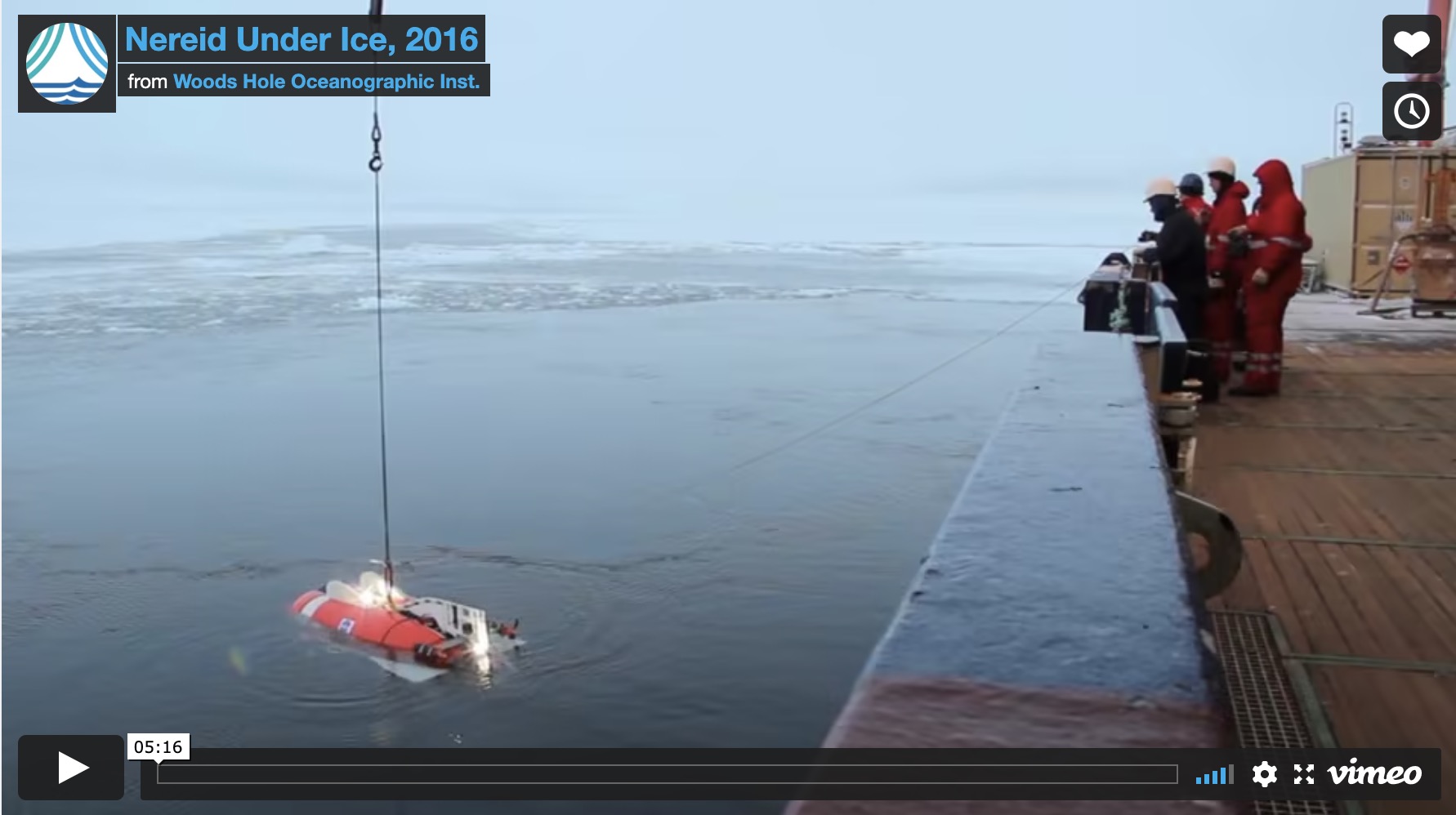
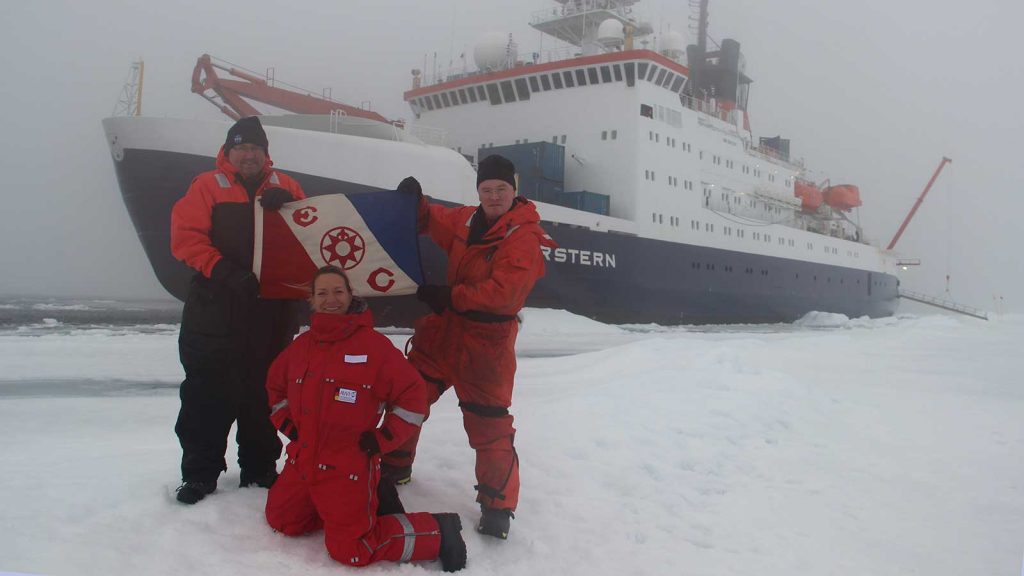 Tuesday, October 18 – It appears everything we can do is done. I had hoped that we would get to see the Aurora Borealis as we steamed south past Spitzbergen, but instead we have had cloudy skies the past two nights and now we are already almost as far south as northern Norway, so I am not holding out much hope.
Tuesday, October 18 – It appears everything we can do is done. I had hoped that we would get to see the Aurora Borealis as we steamed south past Spitzbergen, but instead we have had cloudy skies the past two nights and now we are already almost as far south as northern Norway, so I am not holding out much hope.